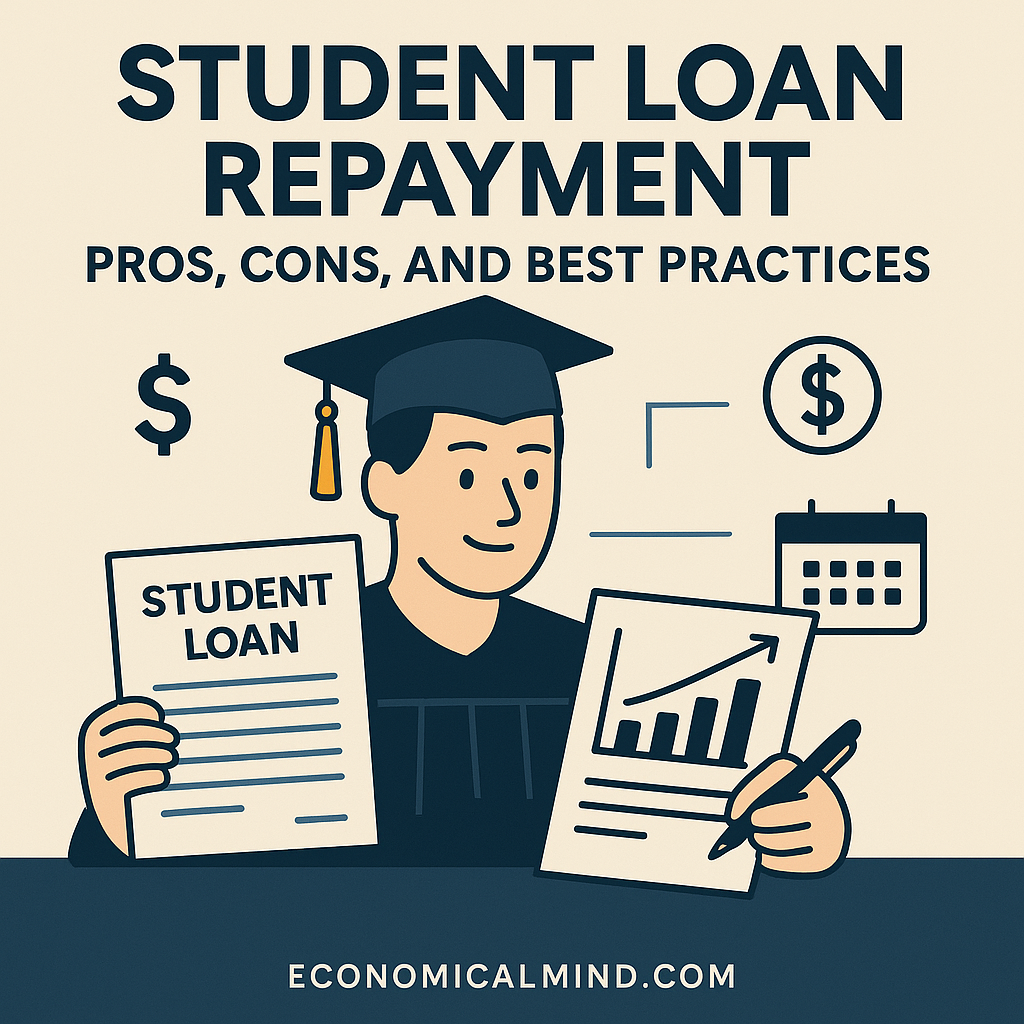
Paying off student loans can feel overwhelming — but understanding your options helps you stay in control. From refinancing to forgiveness programs, each approach has benefits and trade-offs. Here’s how to make smart decisions that fit your goals and financial situation.
Pros of Paying Off Student Loans Strategically
1. Builds Long-Term Financial Freedom
Every payment gets you closer to freeing up cash flow for other goals.
Example: Paying off loans early can accelerate saving for a home or retirement.
2. Improves Credit Score
Consistent, on-time payments show lenders you’re reliable.
Example: A strong repayment record can help you qualify for better mortgage or credit rates later.
3. Reduces Lifetime Interest Costs
Extra payments toward principal shrink interest over time.
Example: Even $50 extra per month can shave years off your repayment schedule.
4. Provides Peace of Mind
Eliminating debt reduces stress and gives a sense of control.
Example: Knowing you’re debt-free lets you focus on financial growth.
Cons and Challenges of Student Loan Repayment
1. Competing Financial Priorities
Focusing only on loans can delay saving or investing.
Fix: Balance repayment with building an emergency fund and contributing to retirement.
2. Potential Loss of Forgiveness Opportunities
Refinancing federal loans can disqualify you from forgiveness or income-driven plans.
Fix: Weigh the benefits of lower interest rates against federal protection loss.
3. Emotional Fatigue
Long repayment terms can feel discouraging.
Fix: Celebrate milestones — like hitting 25%, 50%, and 75% paid off.
4. Interest Accrual During Pauses
Even temporary deferment or forbearance often adds interest.
Fix: Make small interest-only payments if possible during pauses.
5. Risk of Default
Missed payments damage credit and can trigger wage garnishment.
Fix: Set up autopay and explore income-driven repayment if struggling.
Best Practices for Student Loan Repayment
1. Know What You Owe
List all loans, their balances, interest rates, and types (federal vs. private). Knowledge is power.
2. Explore Income-Driven Repayment (IDR) Plans
For federal loans, IDR adjusts payments based on your income, preventing financial strain.
3. Consider Refinancing — Cautiously
Refinancing can lower your rate, but make sure you won’t lose key federal benefits.
4. Set Up Autopay for Discounts
Many servicers offer a small interest rate reduction (often 0.25%) for automatic payments.
5. Prioritize High-Interest Loans
Use the avalanche method to tackle the most expensive loans first.
6. Build an Emergency Fund First
Before making aggressive extra payments, have at least $1,000–$2,000 saved for emergencies.
7. Use Windfalls Wisely
Bonuses, tax refunds, or side income can make a huge dent in your balance.
8. Apply for Forgiveness Programs if Eligible
Programs like Public Service Loan Forgiveness (PSLF) can erase debt after consistent qualifying payments.
9. Track Progress Monthly
Watching your balance drop reinforces motivation and helps you stay consistent.
10. Reassess Every Year
As income or expenses change, reevaluate your repayment strategy to stay aligned with your goals.
Key Takeaway
Student loan repayment isn’t just about eliminating debt — it’s about building momentum toward financial independence. With the right plan and mindset, you can balance repayment with long-term financial growth.
